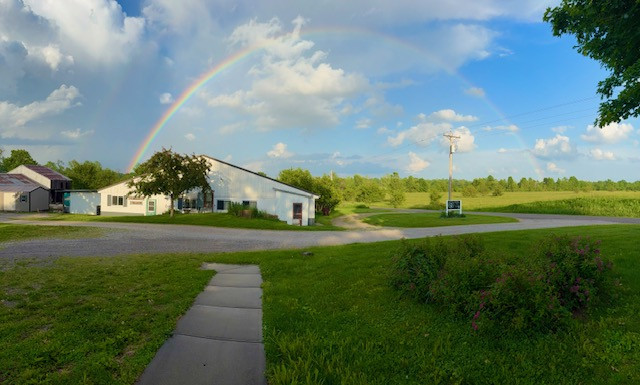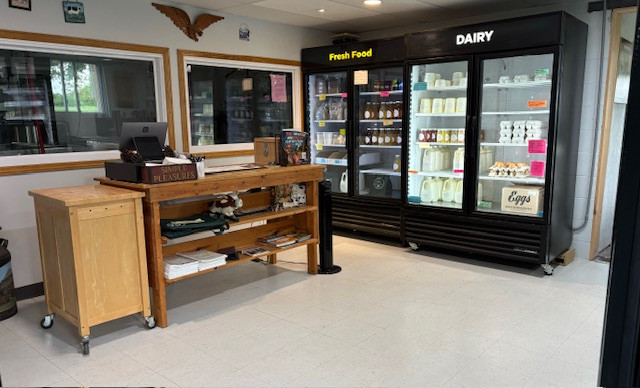Talking Trees
posted on
May 28, 2024

Several years ago, the emerald ash borer began to wreak havoc on ash trees in this region, devastating the population of one of Indiana's native trees. In the tree line in the photo above alone, you can see what appears to be at least 3 that succumbed here. And that's just a fraction of all that have been lost on our farm over the last handful of years.
But there is a very interesting phenomenon also occurring that we've observed for a while. There are hundreds of ash saplings sprouting up in our pastures. The heaviest concentrations are near wood lots or tree lines, but I've observed them coming up in the middle of a pasture with the nearest trees almost a quarter mile away!
If you zoom in on the photo above, you can see the brighter green leaves of a plethora of these saplings amongst the cows. And those are just the ones visible above the grass, in one pasture! It's interesting to note that although occasionally you find other species of trees coming up in the pastures, the ash are hands down the most common. Although mulberry trees/bushes give them a run for their money, but that's another subject).
What I find fascinating is that there had to have been some sort of communication from/among/between the trees under attack. Somehow they mounted a defense by raising up fresh forces! And although most of the older ones (and even many of the younger ones) have died, new sprouts continue to come up. Is it through seed? New life from the roots of the dead trees? Both? I've been told there is a book that discusses the communication of trees. I absolutely believe it is a thing, though I don't claim to know how it happens.
I think it would be interesting to know whether any of the new saplings are developing resistance somehow to the ash borer, or it's just a numbers for survival game. Many years ago, the American chestnut trees became plagued with a blight that was killing them. My understanding is that the solution was to cut down all the chestnut trees. No seeking for resistant plants. Just kill them all before they die I guess was the mantra.
A few trees in a pasture are nice, but a dense stand of trees doesn't allow for much grass growth. So occasionally we mow with the bush hog and keep some of the trees at bay. However, if you would like to be part of an informal experiment, you are welcome to come dig up a sapling or two (or three or whatever...just don't make too big of holes in my pasture, haha! You can borrow our shovel though...) to plant in your yard or tree line, etc. Then see what happens. Going into the summer you might have to commit to watering regularly if the weather pattern turns less rainy.
On our whole farm, I am aware of only one old ash tree that has continued to survive when all the others still living are pretty young trees (maybe less than 10 years old??). It is along my parents' driveway and during my great grandpa's days it stood at the corner of what was then a barnlot. Whether that played a role in it's survivability I can't say, but it does offer the promise that resistance to the emerald ash borer could be entirely possible.
One of my favorite passages in the Bible is in Romans chapter 8. Paul talks about the sons of God (all who are led by the Spirit of God are sons of God), and about creation being subjected to slavery. He says that creation eagerly awaits the revealing of the sons of God...in hope of being set free from slavery into the freedom of the glory of the children of God. By this I understand that those who are led by the Spirit of God play a role in liberating all creation! I may not know what that looks like exactly, but I definitely want to be tuned in to the Spirit of God so I am ready to do my part!





